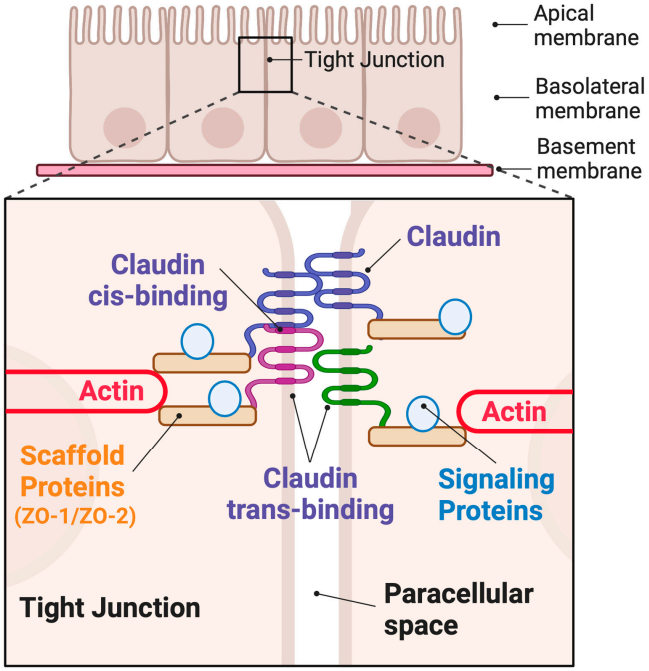Creative Biolabs is one of the leading providers of custom antibody generation and development services for R&D, diagnostic, and therapeutic applications. Especially, we have launched a series of in vitro diagnostic (IVD) antibody development services targeting numerous diagnostic biomarkers of human cancer diseases. Here, we focus on the claudin as a marker of ovarian cancer.
Claudin Protein
Claudins are a family of membranes proteins which play crucial roles in the formation and function of tight junction (TJ). Claudins have been found in various organisms, ranging from nematodes to human being. As a small transmembrane protein with molecular weight of 20-27 kDa, claudins span the cellular membrane 4 times and result in the formation of two highly conservative extracellular loops, which enable the interaction with extracellular components. TJs are critical structures that are important for epithelial cell paracellular permeability and the maintenance of cell polarity. Claudins constitute the backbone of the TJs and account for some of the selective variability of different barriers. Till now, there are 27 different types of claudins identified varying cell- and tissue-specific expression. Among them, the overexpression of claudin-1, -3, -4, -5 and -7 in ovarian tumors may present significant implications for detection, prognosis, and therapy of this disease.
 Fig.1 Representative structure of the claudin protein and the functional domains.1
Fig.1 Representative structure of the claudin protein and the functional domains.1
Claudin Marker of Ovarian Cancer
Various claudin protein types have been found differentially expressed in ovarian cancer. The overexpression of claudin-1 in initiating ovarian cancer cells leads to a high rate of invasive growth and a low degree of cell differentiation. Compared with normal ovarian surface epithelium, high expression of claudin-3 and claudin-4 have been found in varying subtypes of ovarian cancers including serous, clear cell, mucinous, undifferentiated, and endometrioid carcinomas. It has been confirmed that claudin-3 and claudin-4 relate to the enhancement of neoplastic cell invasion and the up-regulation of claudin-3 shows potential application in detection of early stage of epithelial ovarian cancer. In addition, using serial analysis of gene expression (SAGE), both claudin-3 and claudin-4 have been found most highly up-regulated in ovarian cancer. Increased expression of claudin-5 is associated with aggressive behavior in serous ovarian cancer. However, its frequency is much lower than claudins-1, -4 and -7. Moreover, claudin-7 is up-regulated in endometriosis-associated endometrioid ovarian cancer. Due to their expression pattern, claudin proteins can be served as the useful ovarian cancer marker for early detection, diagnosis, and therapy.
 Fig.2 Role of claudin in the formation and function of the tight junction.2
Fig.2 Role of claudin in the formation and function of the tight junction.2
Antibodies are core elements for antibody-based immunoassays for detecting and quantifying antigens of interest in all kinds of samples such as serum, urine, and tissue preparations. IVD antibodies are extensively used for disease screening, prognosis, and therapeutic monitoring. With our versatile IVD platform, Creative Biolabs is proud to develop novel Claudin-specific antibody (pairs) from scratch to commercial IVD kits.
Our team consists of highly skilled and experienced scientists and professionals, fully dedicated and focused on the successful execution and completion of client projects. If you are interested in our services, please contact us to discuss your project needs.
References
For Research Use Only.
